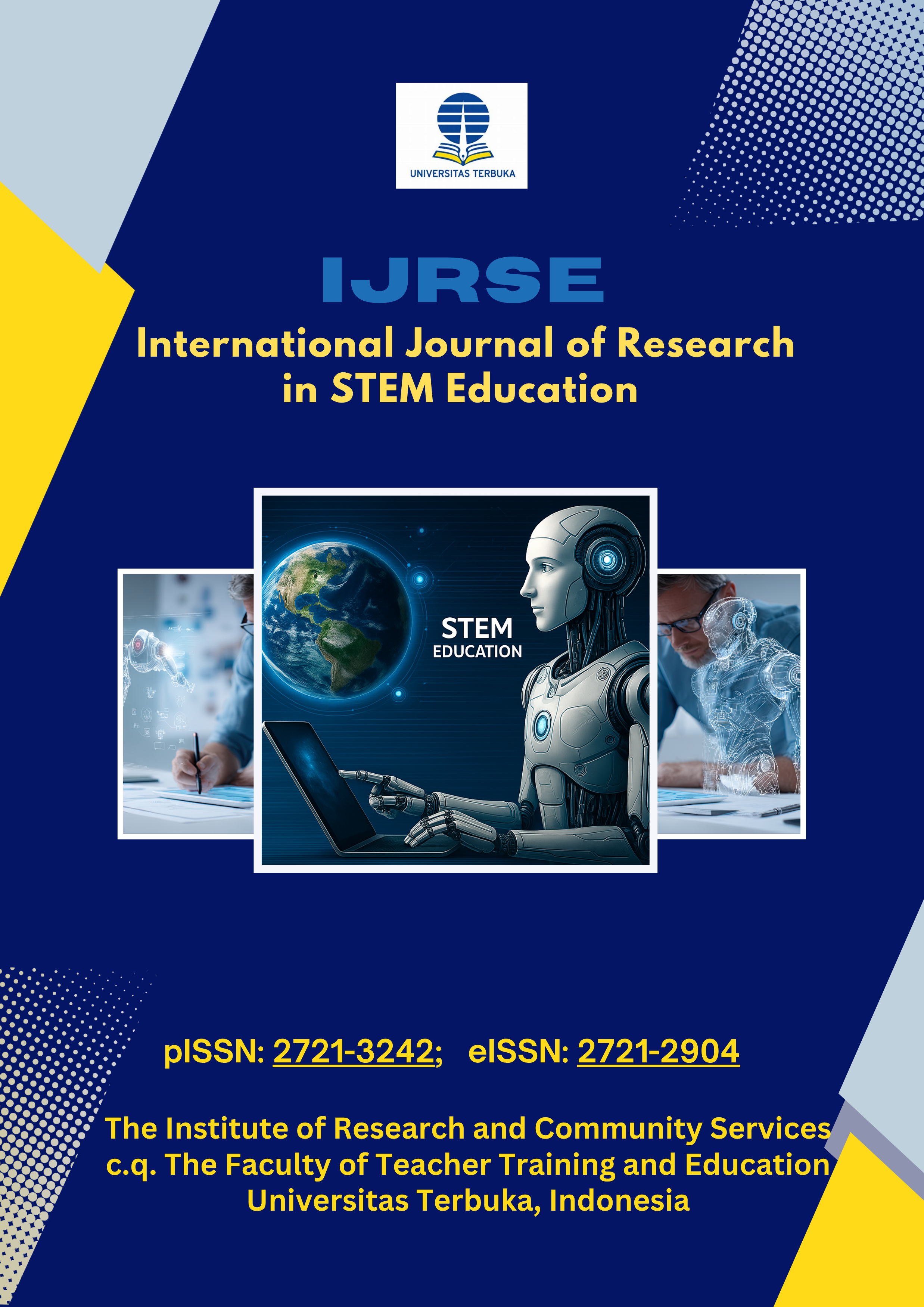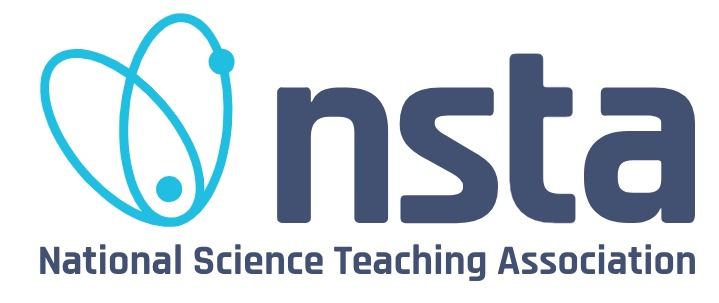Understanding Brain Plasticity in Learning Process
DOI:
https://doi.org/10.33830/ijrse.v2i1.201Keywords:
learning, myelin, brain, plasticityAbstract
Brain plasticity takes an essential part in the learning process and memory retaining. Brain plasticity is connected with myelin sheath development and oligodendrocyte plasticity. Dynamic myelination is attained through certain learning activities. Oligodendrocyte plasticity means changes of oligodendrocyte precursor cell number either increasing or decreasing. This review aims to reveal what learning style is better in optimizing learning capacity by understanding dynamic myelination, brain plasticity, oligodendrocyte plasticity, and learning process. The review paper was based on journal reading. Keywords for literature searching are "Learning, myelin, brain, plasticity, oligodendrocyte" with filters in the last 5 years in the PubMed website. Pubmed was considered as one of the qualified journals. It doesn't rule out the possibility of using another journal that is not listed in PubMed. Result showed 36 articles. Other citations were added based on the previously selected journals. The learning process is closely related to encoding. Making schema while learning new objects are very useful in increasing oligodendrocytes cells number. The paper limitation is it didn't describe how the learning process might improve school performance and success in later life. There isn't any comparison about how each learning activity has an unequal effect on dynamic myelination, brain plasticity, and daily life skills improvement. This review paper's significance is myelin was not static, but it is dynamically changed through learning activities, new experiences, musical, or even practical training. Exposure to a new environment in the learning process will improve myelination and optimize learning. Learning new things is good for our brain because it will prevent dementia.
References
Arancibia-Cárcamo, I. L., Ford, M. C., Cossell, L., Ishida, K., Tohyama, K., and Attwell, D. (2017). Node of Ranvier length as a potential regulator of myelinated axon conduction speed. eLife6: e23329.doi:10.7554/eLife.23329
Auer, F., Vagionitis, S., and Czopka, T. (2018). Evidence for myelin sheath remodeling in the CNS revealed by in vivo imaging. Curr. Biol. 28, 549–559. doi:10.1016/j.cub.2018.01.017
Baddeley, C.M., Foley, S., de Santis, S., Charron, S., Hampshire, A., Caeyenberghs, K., & Jones, D.K. (2017). Dynamics of White Matter Plasticity Underlying Working Memory Training: Multimodal Evidence from Diffusion MRI and Relaxometry. Journal of Cognitive Neuroscience 29:9, 1509–1520.
Battefeld, A., Klooster, J., Kole, M.H.P. (2016). Myelinating satellite oligodendrocytes are integrated in a glial syncytium constraining neuronal high-frequency activity. Nature Communications|7:11298|DOI:10.1038/ncomms11298|www.nature.com/naturecommunications.
Bergles, D.E., Richardson, W.D. (2016). Oligodendrocyte Development and Plasticity. Cold Spring Harb Perspective in Biology. 8: 1-27.
Bucher, D. (2016). Chapter – 12 Contribution of Axons to Short Term Dynamics of Neuronal Communication. Axon and Brain Architecture. Page 245-263.
Bujalka, H., & Emery, B. (2016). Cellular Mechanism of Adaptive Myelination: Bridging the Gap between Animal Studies and Human Cognition. Cogn Neurosci. 8(2):122-124.
Cabezas, G.M.A., Joyce, M.K.P., John, Y.J., Zikopoulos, B., Barbas, H. (2017). Mirror trends of plasticity and stability indicators in primate prefrontal cortex. Eur J Neurosci 46(8): 2392–2405.
Cox, S. R., Ritchie, S. J., Tucker-Drob, E. M., Liewald, D. C., Hagenaars, S. P., Davies, G., Wardlaw, J.M., Gale, C.R., Bastin, M.E., Deary, I.J. (2016). Ageing and brain white matter structure in 3,513 UK Biobankparticipants. Nat.Commun. 7:13629.doi:10.1038/ncomms13629.
Etxeberria, A., Hokanson, K.C., Dao, D.Q., Mayoral, S.R., Mei, F., Redmond, S.A., Ullian, E.M., and Chan, J.R. (2016). Dynamic modulation of myelination in response to visual stimuli alters optic nerve conduction velocity. J. Neurosci. 36, 6937–6948.
Fard, M. K., Van der Meer, F., Sánchez, P., Cantuti-Castelvetri, L., Mandad, S., Jäkel, S., Fornasiero, E.F., Schmitt, S., Ehrlich, M., Starost, L., Kuhlmann, T., Sergiou, C., Schultz, V., Wrzos, C., Bruck, W., Urlaub, H., Dimou, L., Stadelmann, C., Simons, M. (2017). BCAS1 expression deï¬Ânes a population of early myelinating oligodendrocytes in multiple sclerosis lesions. Sci. Transl. Med. 9:eaam7816.doi:10.1126/scitranslmed.aam7816.
Fields, R.D. (2015). A new mechanism of nervous system plasticity: activity dependent myelination. Nat. Rev. Neurosci. 16, 756–767.
Ford, M.C., Alexandrova, O., Cossell, L., Stange-Marten, A., Sinclair, J., Kopp-Scheinflug, C., Pecka, M., Attwell, D., Grothe, B. (2015). Tuning of Ranvier node and internode properties in myelinated axons to adjust action potential timing. Nature Communications|6:8073|DOI: 10.1038/ncomms9073| www.nature.com/naturecommunications.
Freeman, S.A., Desmazie` res, A., Fricker, D., Lubetzki, C., and Sol-Foulon, N. (2016). Mechanisms of sodium channel clustering and its influence on axonal impulse conduction. Cell. Mol. Life Sci. 73, 723–735.
Gibson, E.M., Geraghty, A.C., & Monje, M. (2018). Bad Wrap: Myelin and Myelin Plasticity in Health and Disease. Dev Neurobiol. 78(2):123-135.
Hasan, M., Kanna, M.S., Jung, W., Ramkrishnan, A.S., Iqbal, Z., Lee, Y., & Li, Y. (2019). Schema-like learning and memory consolidation acting through myelination. FASEB J. 33(11): 11758-75.
Hill, R.A., Li, A.M., and Grutzendler, J. (2018). Lifelongcorticalmyelinplasticity and age-related degeneration in the live mammalian brain. Nat. Neurosci. 21, 683–695.
Hughes, E.G., Orthmann-Murphy, J.L., Langseth, A.J., and Bergles, D.E. (2018). Myelin remodeling through experience-dependent oligodendrogenesis in the adult somatosensory cortex. Nat. Neurosci. 21, 696–706.
Jeffries, M.A., Urbanek, K., Torres, L., Wendell, S.G., Rubio, M.E., & Fyffe-Maricich, S.L. (2016). ERK1/2 Activation in Preexisting Oligodendrocytes of Adult Mice Drives New Myelin Synthesis and Enhanced CNS Function. The Journal of Neuroscience. 36(35): 9186–9200.
Kaller, M.S., Lazari, A., Blanco-Duque, C., Sampaio-Baptista, C., & Johansen-Berg, H. (2017). Myelin Plasticity and Behaviour-Connecting the Dots. Curr Opin Neurobiol. 47:86-92.
Keiner, S., Niv, F., Neumann, S., Steinbach, T., Schmeer, C., Hornung, K., Schlenker, Y., Förster, M., Witte, O.W., & Redecker, C. (2017). Effect of skilled reaching training and enriched environment on generation of oligodendrocytes in the adult sensorimotor cortex and corpus callosum. BMC Neurosci. 18:31-40.
Lakhani, B., Borich, M.R., Jackson, J.N., Wadden, K.P., Peters, S., Villamayor, A., MacKay, A.L., Vavasour, I.M., Rauscher, A., & Boyd, L.A. (2016). Motor Skill Acquisition Promotes Human Brain Myelin Plasticity. Neural Plasticity. 2016: 1-7.
Long, P., & Corfas, G. (2017). Neuroscience. To Learn is to Myelinate. Science 346:298-9.
Micu, I., Plemel, J.R., Lachance, C., Proft, J., Jansen, A.J., Cummins, K., van Minnen, J., Syts, P.K. (2016). The molecular physiology of the axo-myelinic synapse. Experimental Neurology. 276: 41-50.
Mount, C.W., Monje, M. (2017). Wrapped to Adapt: Experience-Dependent Myelination. Neuron. 95: 743-56.
Nickel, M., Gu, C. (2018). Regulation of Central Nervous System Myelination in Higher Brain Functions. Neural Plasticity Volume 2018, Article ID 6436453, 12 pages https://doi.org/10.1155/2018/6436453.
Oberlin, L.E., Verstynen, T.D., Burzynska, A.Z., Voss, M.W., Prakash, R.S., Chaddock-Heyman, L., Wong, C., Fanning, J., Awick, E., Gothe, N., Phillips, S.M., Mailey, E., Ehlers, D., Olson, E., Wojcicki, T., McAuley, E., Kramer, A.F., Erickson, K.I. (2016). White matter microstructure mediates the relationship between cardiorespiratory fitness and spatial working memory in older adults. Neuroimage. 131: 91–101.
Ritchie, S. J., Bastin, M. E., Tucker-Drob, E. M., Maniega, S. M., Engelhardt, L. E., Cox, S.R., Royle, N.A., Gow, A.J., Corley, J., Pattie, A., Taylor, A.M., Hernandez, M.D.C.V., Starr, J.M., Wardlaw, J.M., Deary, I.J. (2015). Coupled changes in brain white matter microstructure and fluid intelligence in later life. J. Neurosci. 35, 8672–8682.
Sampaio-Baptista, C., Johansen-Berg, H. (2017). White Matter Plasticity in the Adult Brain. Neuron. 96: 1239-1251. https://doi.org/10.1016/j.neuron.2017.11.026.
Singh, A., Abraham, W.C. (2017). Astrocytes and synaptic plasticity in health and disease. Exp Brain Res. 235:1645–1655.
Swire, M., & Constant, C.F. (2018). Seeing is Believing: Myelin Dynamic in the Adult CNS. Neuron. 98: 684-6.
Thomas, A.G., Dennis, A., Rawlings, N.B., Stagg, C.J., Matthews, L., Morris, M., Kolind, S.H., Foxley, S., Jenkinson, M., Nichols, T.E., Dawes, H., Bandettini, P.A., Johansen-Berg, H. (2016). Multimodal characterization of rapid anterior hippocampal volume increase associated with aerobic exercise. Neuroimage 131, 162–170.
Travaglia, A., Bisaz, R., Cruz, E., Alberini, C.M. (2016). Developmental changes in plasticity, synaptic, glia and connectivity protein levels in rat dorsal hippocampus. Neurobiol Learn Mem. 135: 125–138.
Wake, H., & Kato, D. (2015). Brain Function and White Matter. Brain Nerve. 67(4):505-12.
Williamson, J.M., Lyons, D.A. (2018). Myelin Dynamics Throughout Life: An Ever-Changing Landscape? Cellular Neuroscience. 2018: 1-8.
Xiao, L., Ohayon, D., Mckenzie, I. A., Sinclair-Wilson, A., Wright, J. L., Fudge, A. D., Emery, B., Li, H., Richardson, W.D. (2016). Rapid production of new oligodendrocytes is required in the earliest stages of motor-skill learning. Nat. Neurosci. 19, 1210–1217. doi:10.1038/nn.4351
Yamazaki, Y. (2019). Oligodendrocyte Physiology Modulating Axonal Excitability and Nerve Conduction. In: Sango K., Yamauchi J., Ogata T., Susuki K. Myelin. Advances in Experimental Medicine and Biology, vol 1190. Springer, Singapore
Yamazaki, Y, Hozumi, Y., Kaneko, K., Fujii, S. (2018). Modulatory Effects of Perineuronal Oligodendrocytes on Neuronal Activity in the Rat Hippocampus. Neurochem Res. 43:27–40.
Zheng, J., Sun, X., Ma, C., Li, B., Luo, F. (2019). Voluntary wheel running promotes myelination in the motor cortex through Wnt signaling in mice. Molecular Brain. 12: 85-94.
Downloads
Published
How to Cite
Issue
Section
License
Content Licensing, Copyright, and Permissions
1. License
International Journal of Research in STEM Education (IJRSE) adopts the Creative Commons Attribution-NonCommercial 4.0 International License (CC BY-NC 4.0) as the optimal license for the publication, distribution, use, and reuse of scholarly works for non-commercial purposes.
The non-commercial use of the article will be governed by this license, which allows others to share and adapt the work provided proper attribution is given to the author(s) and the journal.
Creative Commons Attribution-NonCommercial 4.0 International License.
Creative Commons License: CC BY-NC 4.0
2. Author's Warranties
The author warrants that the article is original, written by the stated author(s), has not been published before, contains no unlawful statements, does not infringe the rights of others, is subject to copyright vested exclusively in the author, is free of any third-party rights, and that all necessary written permissions to quote from other sources have been obtained by the author(s).
3. User Rights
The International Journal of Research in STEM Education aims to disseminate published articles as freely as possible. Under the Creative Commons license, users are permitted to copy, distribute, display, and perform the work for non-commercial purposes only, provided that proper attribution is given to the author(s) and this journal.
4. Rights of Authors
Authors retain the following rights:
- Copyright and proprietary rights related to the article, such as patent rights.
- The right to use the substance of the article in future works (e.g., lectures, books).
- The right to reproduce the article for personal purposes.
- The right to self-archive the article.
- The right to enter into separate, additional non-exclusive contractual arrangements for the distribution of the article’s published version (e.g., posting to an institutional repository or publishing it in a book), with acknowledgment of its initial publication in IJRSE.
If the author has a non-exclusive publishing contract with another publisher under a more restrictive license, the author still retains all rights to republish or distribute the work elsewhere, including commercially, as the author is not bound by the license conditions imposed on the journal.
5. Co-Authorship
If the article has multiple authors, the signatory of this agreement warrants that he/she has been authorized by all co-authors to sign this agreement on their behalf and agrees to inform all co-authors of the terms of this agreement.
6. Termination
This agreement may be terminated by either the author or IJRSE with two months’ notice if the other party has materially breached this agreement and failed to remedy such breach within one month after receiving written notice.
No breach or violation of this agreement will cause automatic termination or affect the license granted to IJRSE.
7. Royalties
This agreement entitles the author to no royalties or other fees. To the extent legally permissible, the author waives the right to collect royalties in respect of any use of the article by IJRSE or its sublicensees.
8. Miscellaneous
IJRSE will publish the article (or have it published) once the editorial process has been successfully completed.
The journal reserves the right to edit the article for style, punctuation, spelling, capitalization, referencing, and consistency as deemed appropriate.
The author acknowledges that the article will be made publicly accessible, and such access will be free of charge for readers.








